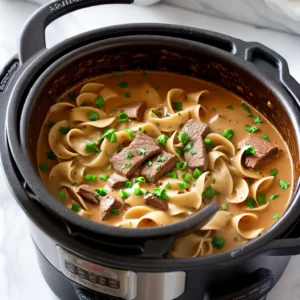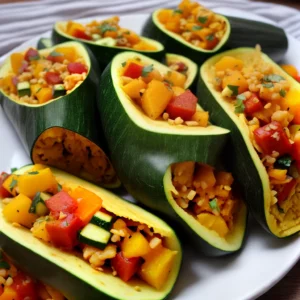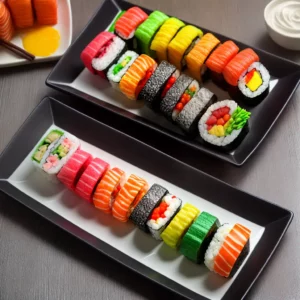Are you a beginner in the kitchen? Do you find yourself tearing up every time you try to cut an onion? Don’t worry, I’ve got you covered! In this beginner’s guide, I will walk you through the step-by-step process of cutting an onion like a pro. You’ll learn different onion cutting techniques and discover valuable tips to make the whole experience easier and tear-free.
Key Takeaways:
- Mastering the art of cutting an onion takes practice, but with these simple techniques, you’ll become a pro in no time.
- Understanding the anatomy of an onion will help you make precise cuts and avoid wasting any valuable onion layers.
- Minimize tears while cutting onions by following a few handy tips and tricks.
- Safety is paramount when handling sharp knives and cutting boards. Always prioritize your well-being.
- Explore different ways to cut onions to suit your recipe needs, from slices to dices to rings and wedges.
Why Learning to Cut an Onion is Important
Learning how to cut an onion is essential for anyone venturing into the world of cooking. Proper onion preparation is the foundation for many recipes, whether it’s slicing onions for a salad, dicing onions for a stir-fry, or chopping onions for a soup. Mastering the art of onion cutting will not only elevate your culinary skills but also save you time in the kitchen.
One of the key benefits of learning to cut an onion is developing knife skills. Using a kitchen knife correctly is crucial for efficient and safe cooking. By practicing onion cutting techniques, you’ll become more comfortable handling a knife, improving your overall knife skills. This will not only make you more efficient in the kitchen but also help prevent accidents.
Understanding how to properly use a kitchen knife is not only important for onion cutting but also for other food preparation tasks. By learning to cut an onion, you’ll gain confidence and proficiency in using a knife to cut various ingredients, enhancing your cooking experience. Plus, knowing how to handle a knife correctly will make your food preparation more efficient, allowing you to move through recipes with ease.
The Importance of Knife Skills
Knife skills are an essential part of culinary mastery. By honing your knife skills, you’ll be able to achieve precise cuts, ensuring even cooking and visually appealing dishes. Proper knife handling also helps control the texture of ingredients, allowing you to create different cuts depending on the recipe requirements.
When cutting an onion, knowing how to hold the knife and position your fingers on the blade will make a significant difference in the outcome. It’s important to hold the knife firmly but not too tightly, and to use a proper grip to maintain control while cutting. Additionally, understanding how to position your fingers on the blade will protect them from accidental slips or injuries.
By learning to cut an onion, you’ll not only enhance the flavors and appearance of your dishes but also improve your overall kitchen skills. So grab a sharp kitchen knife, an onion, and let’s dive into the wonderful world of onion cutting!
| Benefits of Learning to Cut an Onion | Knife Skills Development | Efficient Food Preparation |
|---|---|---|
| Enhances culinary skills | Improves overall knife skills | Makes food preparation more efficient |
| Saves time in the kitchen | Builds confidence in knife handling | Allows for smoother recipe execution |
| Cultivates proficiency in using a knife |
The Anatomy of an Onion
Before diving into the art of cutting an onion, let’s take a closer look at its anatomy. Understanding the structure of an onion will not only help you master the technique but also enhance your overall cooking experience. So, let’s explore the different parts of an onion.
Onion Layers
An onion consists of several layers that you can easily separate. These layers provide the distinct texture and flavor that make onions a versatile ingredient in many recipes. When cutting an onion, you’ll notice that the layers can be easily peeled away, exposing the inner layers.
Onion Skin
The outermost layer of an onion is the papery skin. This thin, protective layer helps keep the onion fresh and intact. When cutting an onion, you’ll need to remove this skin before you can access the layers within. The skin can be easily peeled away, revealing the beautiful layers underneath.
Onion Root and Bulb
The bottom of the onion, also known as the root end, is where it was attached to the plant. This part of the onion is usually discarded during the preparation process. The main bulk of the onion is the bulb, which contains the majority of the layers.
Now that you have a better understanding of the onion’s anatomy, you’ll be better equipped to cut it with precision and confidence.
Tips to Minimize Tears While Cutting Onions
When it comes to cutting onions, tears are often inevitable. The release of certain enzymes in onions is what causes those watery eyes. But fear not, there are ways to minimize those tears and still enjoy the delicious flavor and aroma of onions in your cooking. Here are some helpful tips:
Use a Sharp Knife
Using a sharp knife when cutting onions can make a big difference in minimizing tears. A blunt knife can cause more damage to the onion cells, releasing more enzymes and increasing the tear-inducing effect. A sharp knife will make cleaner cuts, reducing the enzyme release and the likelihood of tears.
Chill the Onion
Another effective tip is to chill the onion before cutting it. Pop the onion in the refrigerator for about 30 minutes before you need to cut it. The cold temperature helps slow down the release of the tear-inducing enzymes, giving you more time to work with the onion before tears start to flow.
Work Under Running Water
Working under a steady stream of running water can help wash away the irritants released by the onion. It also helps to wash your hands frequently as you work to prevent the irritants from lingering on your skin and causing tears.
By following these tips, you can minimize tears while cutting onions and enjoy the wonderful flavor and aroma they bring to your dishes.
How to Safely Cut an Onion
When it comes to cutting onions, safety should always be a top priority. By following proper techniques and using the right tools, you can minimize the risk of accidents and ensure a smooth and enjoyable cooking experience. Here are some essential tips for safely cutting an onion:
Use the Right Knife:
Start by selecting a sharp chef’s knife or a Santoku knife for cutting onions. A sharp knife will make clean and precise cuts, reducing the chances of slips and injuries. Avoid using dull or serrated knives, as they can cause accidents.
Master the Grip:
Hold the knife with a firm grip and position your fingers curled under the handle, keeping your thumb resting against the side of the blade. This grip provides better control and stability while cutting, minimizing the risk of the knife slipping.
Secure the Cutting Board:
Place a non-slip cutting board on a stable surface to prevent it from moving while you’re cutting. Make sure the cutting board is clean and dry to avoid any accidents caused by slipping.
Follow Proper Technique:
Start by cutting off the ends of the onion and then peel off the dry outer skin. Cut the onion in half from root to tip and lay one half on the cutting board. Make vertical cuts parallel to the cutting board, being careful to keep your fingers away from the blade. Finally, make horizontal cuts to create evenly sized onion pieces.
Summary:
Cutting onions can be done safely by using the right knife, mastering the grip, securing the cutting board, and following proper cutting techniques. By implementing these safety measures, you can minimize the risk of accidents and enjoy the process of preparing onions for your favorite dishes.
| Safety Tips | Details |
|---|---|
| Use the Right Knife | Select a sharp chef’s knife or a Santoku knife for clean and precise cuts. |
| Master the Grip | Hold the knife with a firm grip, keeping your fingers curled under the handle and your thumb against the side of the blade. |
| Secure the Cutting Board | Place a non-slip cutting board on a stable surface to prevent it from moving while you’re cutting. |
| Follow Proper Technique | Cut off the ends of the onion, peel off the outer skin, make vertical and horizontal cuts to create evenly sized pieces. |
Different Ways to Cut an Onion (Slicing, Dicing, and Chopping)
When it comes to cutting an onion, there are several techniques you can use depending on the desired outcome. Each method has its own advantages and is suited for different recipes. In this section, I will explain three common ways to cut an onion: slicing, dicing, and chopping.
Slicing an Onion
Slicing an onion is the most basic and versatile technique. It involves cutting the onion into thin, even slices. To slice an onion, start by cutting off the root end and the top part of the onion. Then, peel off the papery skin and cut the onion in half lengthwise. Place the cut side down and make horizontal slices across the onion, keeping your fingers curled in a claw shape to avoid any accidents. Finally, make vertical cuts to create thin slices. Sliced onions are perfect for salads, sandwiches, and stir-fries.
Dicing an Onion
Dicing an onion involves cutting it into small, uniform pieces. To dice an onion, start by cutting off the root end and the top part of the onion. Then, peel off the skin and cut the onion in half lengthwise. Place the cut side down and make vertical cuts, keeping them close together but not too close to the edge. Next, make horizontal cuts, again keeping them close together and perpendicular to the first set of cuts. Finally, make a final vertical cut to release the diced onion. Diced onions are commonly used in sauces, soups, and stews.
Chopping an Onion
Chopping an onion involves cutting it into larger pieces. To chop an onion, start by cutting off the root end and the top part of the onion. Then, peel off the skin and cut the onion in half lengthwise. Place the cut side down and make vertical cuts, keeping them further apart than when dicing. Next, make horizontal cuts, again keeping them further apart and perpendicular to the first set of cuts. Finally, make a final vertical cut to release the chopped onion. Chopped onions are great for sautéing, roasting, and grilling.
| Technique | Description | Suitable For |
|---|---|---|
| Slicing | Cutting the onion into thin, even slices. | Salads, sandwiches, stir-fries |
| Dicing | Cutting the onion into small, uniform pieces. | Sauces, soups, stews |
| Chopping | Cutting the onion into larger pieces. | Sautéing, roasting, grilling |
Cutting Onion Rings and Wedges
When it comes to cutting onions, there’s more to explore than just slicing, dicing, and chopping. You can also create delicious onion rings and wedges that add a flavorful twist to your dishes. Whether you’re looking to elevate your sandwiches, stir-fries, or roasts, knowing how to cut onion rings and wedges is a valuable skill in the kitchen.
To make onion rings, start by peeling the onion and cutting off both ends. Then, slice the onion horizontally into rings of your desired thickness. For evenly-sized rings, you can use a mandoline or an onion ring cutter, if available. Once you’ve sliced the onion, separate the rings and they’re ready to be used in your recipes.
If you prefer onion wedges, begin by peeling the onion and cutting it in half from top to bottom. Place each half flat-side down on the cutting board, and then make vertical cuts from the rounded side to the flat side. Aim for approximately ½ inch thick wedges. Finally, separate the wedges, and you’re good to go!
| Benefits of Cutting Onion Rings and Wedges | Dishes to Use Onion Rings and Wedges |
|---|---|
| Enhances texture and flavor in dishes | Sandwiches |
| Provides a crispy and satisfying bite | Stir-fries |
| Cooks faster than larger onion pieces | Roasts |
So, whether you’re looking to add a crunchy element to your favorite burger or create a flavorful side dish, mastering the art of cutting onion rings and wedges opens up a world of culinary possibilities. Experiment with different recipes and enjoy the delightful taste and texture that these onion cuts bring to your meals. Just be sure to have a sharp knife and a stable cutting board to achieve clean and precise cuts.
Tips for Perfect Onion Rings and Wedges:
- Choose medium to large-sized onions for better results.
- Use a sharp knife to ensure clean cuts.
- Separate the rings or wedges carefully to avoid breaking them.
- For extra crispiness, you can dip the onion rings in a batter or breadcrumbs before frying.
- When making onion wedges, try to keep them as uniform as possible for even cooking.
Tips for Storing Cut Onions
Once you’ve cut an onion, it’s essential to store it properly to maintain its freshness and flavor. Here are some tips to help you store cut onions effectively:
1. Wrap Tightly and Remove Air
When storing cut onions, it’s crucial to wrap them tightly in plastic wrap or place them in an airtight container. This prevents air exposure, which can cause the onions to become dry and lose their flavor. Make sure to remove all air from the storage container before sealing it to maximize freshness.
2. Refrigerate
Storing cut onions in the refrigerator is the best way to keep them fresh for a longer period. The cool temperature slows down the degradation process and helps maintain their texture and taste. It’s recommended to store cut onions in the refrigerator for up to 3-5 days.
3. Separate from Other Foods
Onions have a strong aroma that can transfer to other foods in close proximity. To avoid cross-contamination of flavors, store cut onions separately from other ingredients in your refrigerator. You can use a designated container or a sealable plastic bag to keep them isolated.
4. Use as Soon as Possible
While refrigeration helps prolong the freshness of cut onions, it’s still best to use them as soon as possible. Over time, even when stored correctly, cut onions may start to lose their flavor and texture. Incorporate them into your recipes within the recommended storage time to enjoy their optimal taste.
By following these tips, you can ensure that your cut onions stay fresh and flavorful for your culinary creations. Proper storage not only helps maintain their quality but also saves you time and reduces food waste.
Table: Guidelines for Storing Cut Onions
| Storage Method | Storage Time |
|---|---|
| Refrigerator (wrapped tightly, air removed) | 3-5 days |
| Refrigerator (in an airtight container) | 3-5 days |
| Refrigerator (in a sealable plastic bag) | 3-5 days |
Freezing Chopped Onions for Convenience
As a busy cook, I know the value of saving time in the kitchen. That’s why I love freezing chopped onions for future use. Not only does it save me the hassle of chopping onions every time I cook, but it also ensures that I always have onions on hand when I need them.
To freeze chopped onions, start by peeling and chopping the onions into small pieces. You can choose to dice or mince them, depending on your preference. Then, spread the chopped onions in a single layer on a baking sheet lined with parchment paper. Pop the baking sheet into the freezer for a couple of hours or until the onions are frozen solid.
Once the onions are fully frozen, transfer them to portion-sized freezer bags. Make sure to squeeze out as much air as possible from the bags before sealing them. Label the bags with the date and quantity of onions, so you know what you have on hand. Frozen chopped onions can be stored in the freezer for up to six months.
| Benefits of Freezing Chopped Onions | Instructions for Freezing Chopped Onions |
|---|---|
|
|
Freezing chopped onions has made meal prep so much easier for me. It’s a time-saving technique that I highly recommend to any home cook. With a stash of frozen chopped onions in the freezer, I can whip up delicious meals in no time.
Using Frozen Chopped Onions
When it’s time to use the frozen chopped onions, there’s no need to thaw them before cooking. You can simply add them directly to your recipes. Frozen onions work well in cooked dishes like soups, stews, casseroles, and stir-fries. They may not retain their crisp texture if used raw or as a topping.
To ensure even distribution of flavor, give the frozen chopped onions a quick shake in the freezer bag before adding them to your dish. This will help prevent clumps and ensure that each bite is packed with oniony goodness.
So next time you find yourself with a surplus of onions or need to save time in the kitchen, try freezing chopped onions. It’s a simple yet effective method that will make cooking more convenient and flavorful.
Frequently Asked Questions About Cutting Onions
As a beginner in the kitchen, you may have some questions about cutting onions. Don’t worry, I’m here to help! Below, I’ve answered some common queries to guide you in your onion-cutting journey.
Is it necessary to refrigerate store-bought onions?
Yes, it is recommended to store store-bought onions in the refrigerator. This helps maintain their freshness and prevents spoilage. Make sure to place them in a well-ventilated bag or container to avoid moisture buildup, which can lead to rotting. Additionally, store onions away from other produce, as they release gases that can cause nearby fruits and vegetables to spoil faster.
What size onion should I buy for my recipes?
The size of the onion you should buy depends on your recipe and personal preference. Generally, medium-sized onions are a versatile choice for most dishes. They provide a good balance of flavor and texture without overpowering the other ingredients. However, if you prefer a milder onion flavor, opt for smaller onions, while larger onions are suitable for recipes that require a stronger onion taste.
How long can onions last when stored properly?
When stored properly in a cool and dry place, uncut onions can last for several weeks to a few months. It’s important to keep them in a well-ventilated area to prevent moisture buildup, which can cause them to spoil. However, once an onion is cut, it should be used within a few days. If you have leftover chopped onions, you can freeze them for future use.
Can I store cut onions in the freezer?
Yes, you can freeze chopped onions to extend their shelf life. To do this, simply place the chopped onions in portion-sized bags, remove any excess air, and seal tightly. Frozen onions can be stored for up to six months. When you’re ready to use them, simply thaw the desired amount and incorporate them into your recipe. Freezing chopped onions is a convenient way to have pre-prepared ingredients on hand for quick and easy meal preparation.
| Question | Answer |
|---|---|
| Is it necessary to refrigerate store-bought onions? | Yes, it is recommended to store store-bought onions in the refrigerator. This helps maintain their freshness and prevents spoilage. Make sure to place them in a well-ventilated bag or container to avoid moisture buildup, which can lead to rotting. Additionally, store onions away from other produce, as they release gases that can cause nearby fruits and vegetables to spoil faster. |
| What size onion should I buy for my recipes? | The size of the onion you should buy depends on your recipe and personal preference. Generally, medium-sized onions are a versatile choice for most dishes. They provide a good balance of flavor and texture without overpowering the other ingredients. However, if you prefer a milder onion flavor, opt for smaller onions, while larger onions are suitable for recipes that require a stronger onion taste. |
| How long can onions last when stored properly? | When stored properly in a cool and dry place, uncut onions can last for several weeks to a few months. It’s important to keep them in a well-ventilated area to prevent moisture buildup, which can cause them to spoil. However, once an onion is cut, it should be used within a few days. If you have leftover chopped onions, you can freeze them for future use. |
| Can I store cut onions in the freezer? | Yes, you can freeze chopped onions to extend their shelf life. To do this, simply place the chopped onions in portion-sized bags, remove any excess air, and seal tightly. Frozen onions can be stored for up to six months. When you’re ready to use them, simply thaw the desired amount and incorporate them into your recipe. Freezing chopped onions is a convenient way to have pre-prepared ingredients on hand for quick and easy meal preparation. |
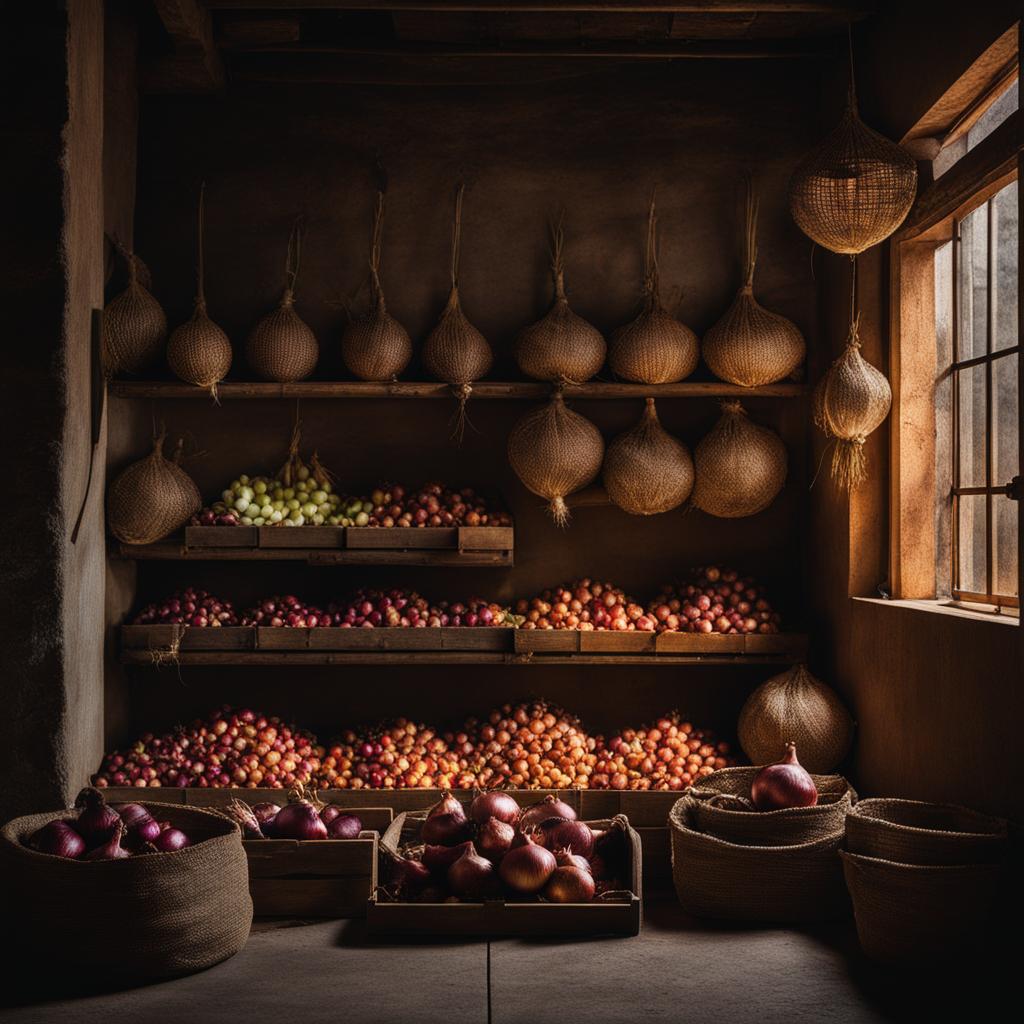
Onion Health Benefits and Nutritional Information
Onions are not only a staple in the kitchen but also offer a range of health benefits. They are packed with essential vitamins, minerals, and antioxidants that contribute to overall well-being. Let’s explore the nutritional value and health benefits of onions.
| Nutrient | Amount per 100g |
|---|---|
| Calories | 40 |
| Carbohydrates | 9g |
| Fiber | 2g |
| Vitamin C | 7mg |
| Potassium | 146mg |
| Folate | 19mcg |
Onions are a low-calorie food, making them a great addition to a balanced diet. They are also low in fat and cholesterol-free. The high fiber content in onions supports digestion and can help maintain a healthy weight. Additionally, onions are rich in vitamin C, which supports immune function and collagen production. They also contain potassium, an essential mineral for maintaining proper fluid balance and regulating blood pressure.
Furthermore, onions are a great source of antioxidants. Antioxidants help neutralize harmful free radicals in the body, reducing the risk of chronic diseases such as heart disease and certain types of cancer. The sulfur compounds found in onions are responsible for their distinct aroma and also contribute to their antioxidant properties. These compounds have been linked to reducing inflammation and promoting heart health.
Onion Cooking Techniques: Exploring the Versatility of Onions
Onions are a versatile ingredient that can be cooked using various techniques, adding depth and flavor to a wide range of dishes. Whether you’re sautéing, stir-frying, caramelizing, roasting, grilling, frying, stewing, or using them in soups, salads, or as garnishes, onions bring their unique taste and aroma to every preparation.
Sautéing is a popular cooking method for onions, as it brings out their natural sweetness and adds a subtle caramelized flavor. Start by heating some oil or butter in a skillet over medium heat. Add thinly sliced onions and cook them until they turn soft and golden brown. Sautéed onions are a delicious addition to dishes like pasta, stir-fries, and sandwiches.
“When I sauté onions, I love the way their aroma fills the kitchen, creating a warm and inviting atmosphere.”
Stir-frying is another quick and flavorful way to cook onions. Heat a wok or a large skillet over high heat, add some oil, and then toss in thinly sliced onions along with other vegetables and proteins of your choice. Keep the heat high and stir-fry them quickly, ensuring they retain their crunch and color. Stir-fried onions are excellent in Asian-inspired dishes like fried rice, noodle stir-fries, and vegetable medleys.
If you’re looking to add a rich and sweet taste to your dishes, caramelizing onions is the way to go. To caramelize onions, thinly slice them and cook in a pan with butter or oil over low heat. The slow cooking process allows the natural sugars in the onions to release and turn them golden brown. Caramelized onions are a delicious addition to burgers, pizzas, French onion soup, and many other recipes.
| Onion Cooking Technique | Best Use |
|---|---|
| Sautéing | Pasta, stir-fries, sandwiches |
| Stir-frying | Fried rice, noodle stir-fries, vegetable medleys |
| Caramelizing | Burgers, pizzas, French onion soup |
| Roasting | Roasted vegetables, meat dishes |
| Grilling | Kabobs, burgers, vegetable skewers |
| Frying | Onion rings, crispy toppings |
| Stewing | Soups, stews, braised dishes |
Roasting onions brings out their natural sweetness and adds a caramelized flavor. Cut onions into wedges, drizzle with olive oil, season with salt and pepper, and roast them in a preheated oven until tender and golden brown. Roasted onions are delicious as a side dish, in salads, or as a topping for meat dishes.
Grilling onions lends them a smoky and charred flavor. Slice onions into thick rounds or skewer them and brush with oil before grilling. Cook them over medium-high heat until they are soft and slightly charred. Grilled onions are perfect for kabobs, burgers, and vegetable skewers, adding a delicious depth of flavor.
Frying onions can transform them into crispy and golden delights. Dip thinly sliced onions into a seasoned batter, then deep-fry until they turn golden brown and crispy. Fried onions make a delightful topping for dishes like green bean casserole, hot dogs, and burgers.
Stewing onions involves cooking them slowly in a liquid until they soften and absorb the flavors of the dish. Whether it’s in soups, stews, or braised dishes, stewed onions add a depth of flavor and enhance the overall taste of the recipe.
Explore the variety of onion cooking techniques to elevate your dishes and experiment with different flavors and textures. From sautéing to stewing, onions offer endless culinary possibilities that are sure to impress.
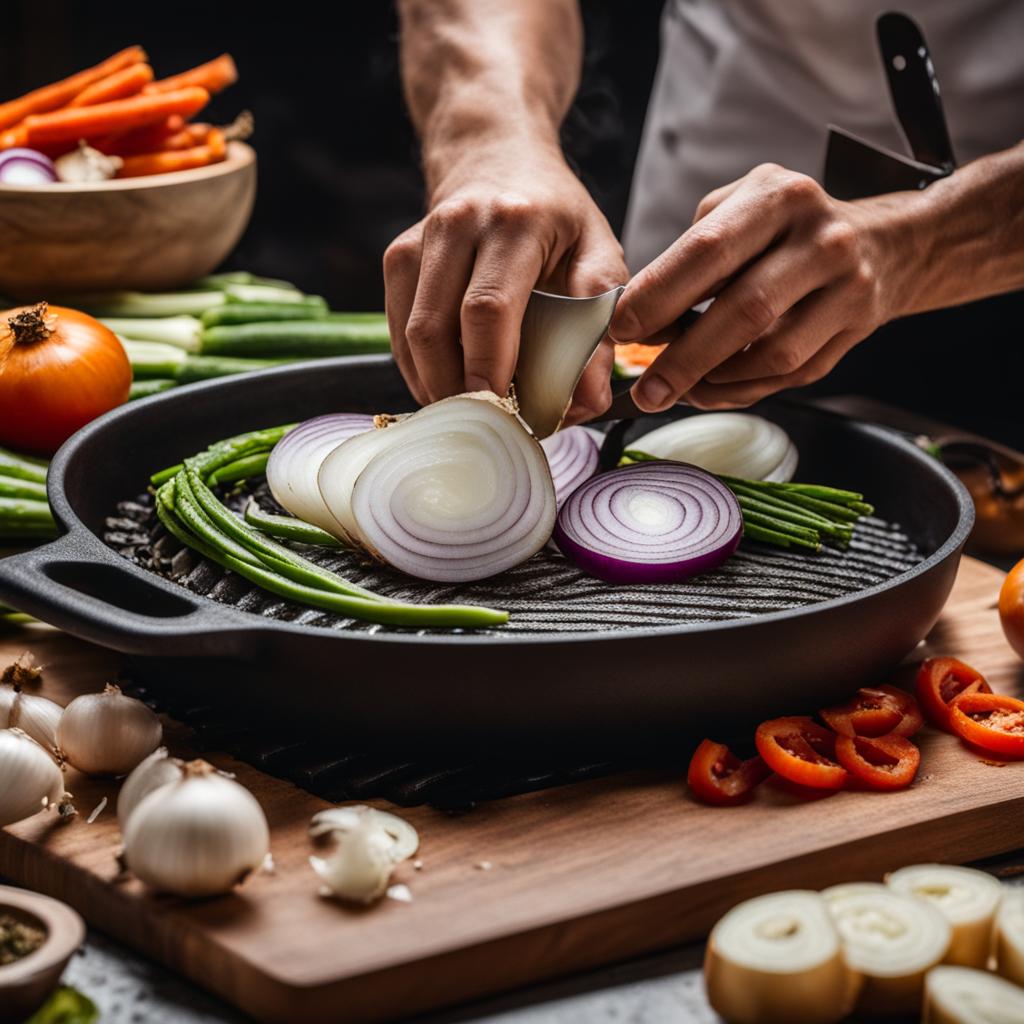
Sources:
- https://www.thespruceeats.com/onion-cooking-tips-and-recipes-4684195
- https://www.bonappetit.com/recipe/caramelized-onions
- https://www.seriouseats.com/2014/09/8-onion-recipes-stir-fried-caramelized-roasted-pickled-soup-full.html
Delicious Recipes Using Onions
Onions are a versatile ingredient that adds flavor and depth to a wide range of dishes. From savory soups to mouthwatering stir-fries, there are countless delicious recipes that showcase the versatility of onions. Whether you’re a seasoned cook or just starting out in the kitchen, these recipes are sure to impress your family and friends.
1. Sautéed Onions with Garlic and Thyme
This simple yet flavorful recipe is a great way to elevate any dish. Start by heating a tablespoon of olive oil in a skillet over medium heat. Add thinly sliced onions and sauté until they become soft and translucent. Then, add minced garlic and fresh thyme leaves and continue cooking for another minute or two. These sautéed onions are perfect as a topping for burgers, sandwiches, or even as a side dish.
“Sautéed onions with garlic and thyme add a burst of flavor to any savory dish.”
2. Caramelized Onion and Gruyere Tart
For a more indulgent treat, try making a caramelized onion and gruyere tart. Start by thinly slicing a large onion and cooking it in butter over low heat until it becomes golden brown and caramelized. Roll out store-bought puff pastry and spread a layer of caramelized onions on top. Sprinkle with shredded gruyere cheese and bake until the pastry is golden and the cheese is melted and bubbly. This savory tart is perfect for brunch, lunch, or as an appetizer at your next gathering.
“A caramelized onion and gruyere tart is a crowd-pleasing dish that combines sweet and savory flavors.”
3. Grilled Balsamic Glazed Onions
When the weather is nice, take advantage of your grill and make some delicious grilled balsamic glazed onions. Start by slicing onions into thick rounds and brushing them with a mixture of balsamic vinegar, olive oil, salt, and pepper. Grill the onions over medium heat until they are tender and have beautiful grill marks. Serve these grilled onions as a side dish with grilled meats or add them to salads for a burst of smoky flavor.
“Grilled balsamic glazed onions are a delicious addition to any summer cookout.”
| Recipe | Description |
|---|---|
| Sautéed Onions with Garlic and Thyme | Thinly sliced onions sautéed with garlic and thyme for a burst of flavor. |
| Caramelized Onion and Gruyere Tart | A savory tart with golden caramelized onions and melted gruyere cheese. |
| Grilled Balsamic Glazed Onions | Onions grilled to perfection and glazed with balsamic vinegar. |
Tips for Selecting and Buying Onions
When it comes to selecting and buying onions, there are a few things to keep in mind to ensure you choose the best ones for your recipes. The freshness and quality of the onions can greatly impact the flavor and texture of your dishes. Here are some tips to help you make the right choice:
- Check for firmness: Give the onion a gentle squeeze to feel for firmness. It should be sturdy and not squishy or soft. Avoid onions with any signs of rot or mold.
- Avoid soft spots: Inspect the onion for any soft spots or areas that feel mushy. These are indications of spoilage, and the onion may not have the desired texture or taste.
- Choose the right size: Consider the size of the onion needed for your recipes. Smaller onions are typically milder in flavor, while larger onions can have a stronger taste. Select the appropriate size based on your preferences and the recipe requirements.
By carefully selecting and buying onions, you can ensure that your dishes have the best flavor and texture. Fresh onions add a delightful aroma and taste to your cooking, enhancing the overall experience. Keep these tips in mind the next time you go grocery shopping for onions.
| Onion Selection Tips | Onion Freshness |
|---|---|
| Check for firmness | Avoid soft spots |
| Choose the right size |
Remember, the quality of your ingredients can make a significant difference in your culinary creations. So, take the time to choose the best onions for your cooking needs, and enjoy the wonderful flavors they bring to your dishes.
Safety Precautions When Cutting Onions
When it comes to cutting onions, safety should always be a top priority. Following proper safety precautions not only helps prevent accidents but also ensures a smooth and enjoyable cooking experience. Here are some essential tips to keep in mind:
1. Use the Right Knife and Cutting Surface
Using a sharp knife is crucial when cutting onions. A dull knife can slip and cause injuries. Opt for a chef’s knife or a Santoku knife, which are both versatile and efficient for cutting onions. Additionally, always work on a stable cutting surface, such as a cutting board, to ensure a secure and even base for chopping.
2. Mind Your Fingers
Proper hand placement is vital to avoid accidental cuts. Curl your fingers inward and keep your fingertips tucked away from the blade while holding the onion. This technique helps protect your fingers from potential injuries.
3. Minimize Distractions
When working with sharp objects like knives, it’s important to minimize distractions. Avoid multitasking or having conversations that take your attention away from cutting the onion. Focusing on the task at hand reduces the risk of accidents.
“Always remember to prioritize safety when cutting onions. By using the right knife and cutting surface, minding your fingers, and minimizing distractions, you can ensure a safe and accident-free cooking experience.”
By following these safety precautions, you can confidently handle and cut onions without worrying about potential accidents. Remember, practice makes perfect, so keep honing your knife skills and enjoy the flavorful creations you’ll make with onions in your kitchen.
Conclusion
So there you have it! You’ve now learned the essential skills of how to cut an onion. As a beginner, this comprehensive guide has provided you with the knowledge of onion cutting techniques and tips to ensure a tear-free experience. With practice, you’ll become more confident in your knife skills and onion preparation.
Remember, when cutting onions, it’s crucial to have a sharp knife and use proper knife handling techniques. Utilize a stable cutting surface and avoid distractions to minimize the risk of accidents. And always prioritize your safety in the kitchen.
Now that you’ve mastered the art of cutting an onion, you can confidently embark on your culinary adventures. Explore the countless possibilities that onions offer in the kitchen and enjoy creating delicious meals. So go ahead, slice, dice, chop, sauté, fry, and savor the incredible flavors that onions bring to your dishes!
FAQ
Can I refrigerate store-bought onions?
Yes, you can refrigerate store-bought onions to extend their freshness. Make sure to store them in a cool and dry place.
What size onion should I buy for certain recipes?
The size of the onion you should buy depends on the recipe. Generally, medium-sized onions are a good option for most dishes.
How long can onions last when stored properly?
When stored properly in a cool and dry place, onions can last for several weeks to a few months.
How do I store cut onions in the refrigerator?
To store cut onions in the refrigerator, wrap them tightly in plastic wrap or place them in an airtight container. This helps prevent them from drying out and absorbing odors from other foods.
Can I freeze chopped onions for future use?
Yes, you can freeze chopped onions for convenience. Place them in portion-sized bags and store them in the freezer. They can be used directly from the freezer in cooked dishes.
What are the nutritional benefits of onions?
Onions are rich in vitamin C, fiber, and antioxidants. They also contain various minerals and have anti-inflammatory properties.
What are the different cooking techniques I can use with onions?
Onions can be sautéed, stir-fried, caramelized, roasted, grilled, fried, stewed, used in soups, salads, and as garnishes, providing a wide range of flavors and textures in dishes.
Can you provide some delicious recipes using onions?
Certainly! Here are a few recipes to try: sautéed onions, stir-fried onions, caramelized onions, roasted onions, grilled onions, fried onions, onion soups, and onion salads.
How do I select and buy the right onions?
When selecting onions, look for firm ones with no soft spots. The size of the onion should match the recipe you’re preparing.
What are some safety precautions when cutting onions?
It’s important to handle knives safely and use a stable cutting surface. Avoid distractions while working with sharp objects to prevent accidents.
Source Links
- https://feelgoodfoodie.net/recipe/how-to-cut-onion/
- https://www.simplyrecipes.com/recipes/how_to_chop_an_onion/
- https://www.seriouseats.com/knife-skills-how-to-slice-and-dice-an-onion
Related Recipes:
 How to Cut Green Onions? (Step-By-Step Guide)
How to Cut Green Onions? (Step-By-Step Guide)
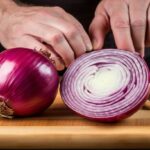 How to Chop an Onion? (Perfect Step-By-Step Guide)
How to Chop an Onion? (Perfect Step-By-Step Guide)
 How to Cut a Tomato? (Perfect Step-By-Step Guide)
How to Cut a Tomato? (Perfect Step-By-Step Guide)
 How to Cut Mushrooms? (Perfect Step-By-Step Guide)
How to Cut Mushrooms? (Perfect Step-By-Step Guide)
 Cleaning Plastic Cutting Boards: Tips and Tricks
Cleaning Plastic Cutting Boards: Tips and Tricks
 How to Cut Shallots? (Perfect Step-By-Step Guide)
How to Cut Shallots? (Perfect Step-By-Step Guide)
 How to Cut an Avocado Quickly and Safely
How to Cut an Avocado Quickly and Safely
 How to Cut a Watermelon? (Perfect Step-By-Step Guide)
How to Cut a Watermelon? (Perfect Step-By-Step Guide)



